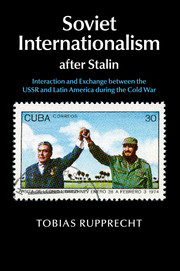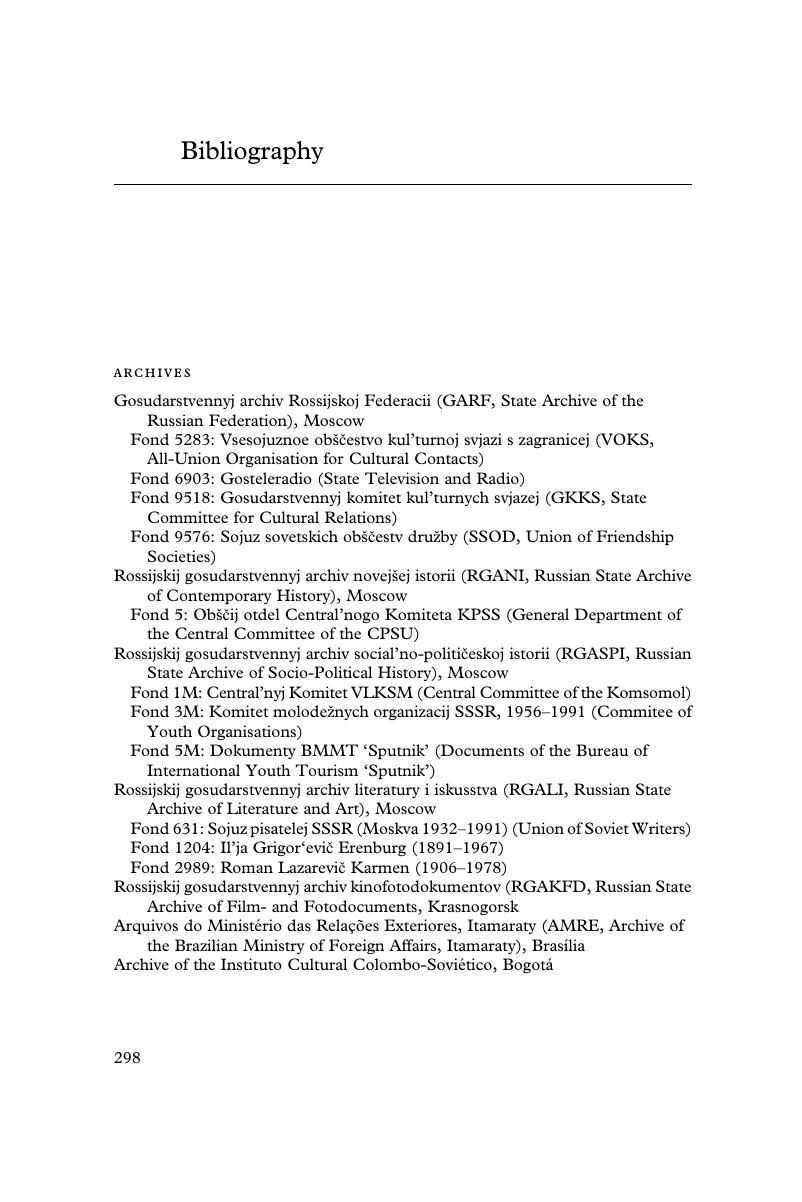 Soviet Internationalism after Stalin
Soviet Internationalism after Stalin Book contents
- Soviet Internationalism after Stalin
- Soviet Internationalism after Stalin
- Copyright page
- Contents
- Preface and acknowledgements
- Introduction: the end of Soviet isolationism after 1953
- 1 A modern image for the USSR
- 2 Moscow learns the mambo
- 3 Paradise lost and found
- 4 From Russia with a diploma
- 5 Desk revolutionaries
- Conclusion
- Postface: legacies of Soviet internationalism in Latin America and Russia
- Bibliography
- Index
- References
Bibliography
Published online by Cambridge University Press: 05 August 2015
- Soviet Internationalism after Stalin
- Soviet Internationalism after Stalin
- Copyright page
- Contents
- Preface and acknowledgements
- Introduction: the end of Soviet isolationism after 1953
- 1 A modern image for the USSR
- 2 Moscow learns the mambo
- 3 Paradise lost and found
- 4 From Russia with a diploma
- 5 Desk revolutionaries
- Conclusion
- Postface: legacies of Soviet internationalism in Latin America and Russia
- Bibliography
- Index
- References
Summary

- Type
- Chapter
- Information
- Soviet Internationalism after StalinInteraction and Exchange between the USSR and Latin America during the Cold War, pp. 298 - 322Publisher: Cambridge University PressPrint publication year: 2015


